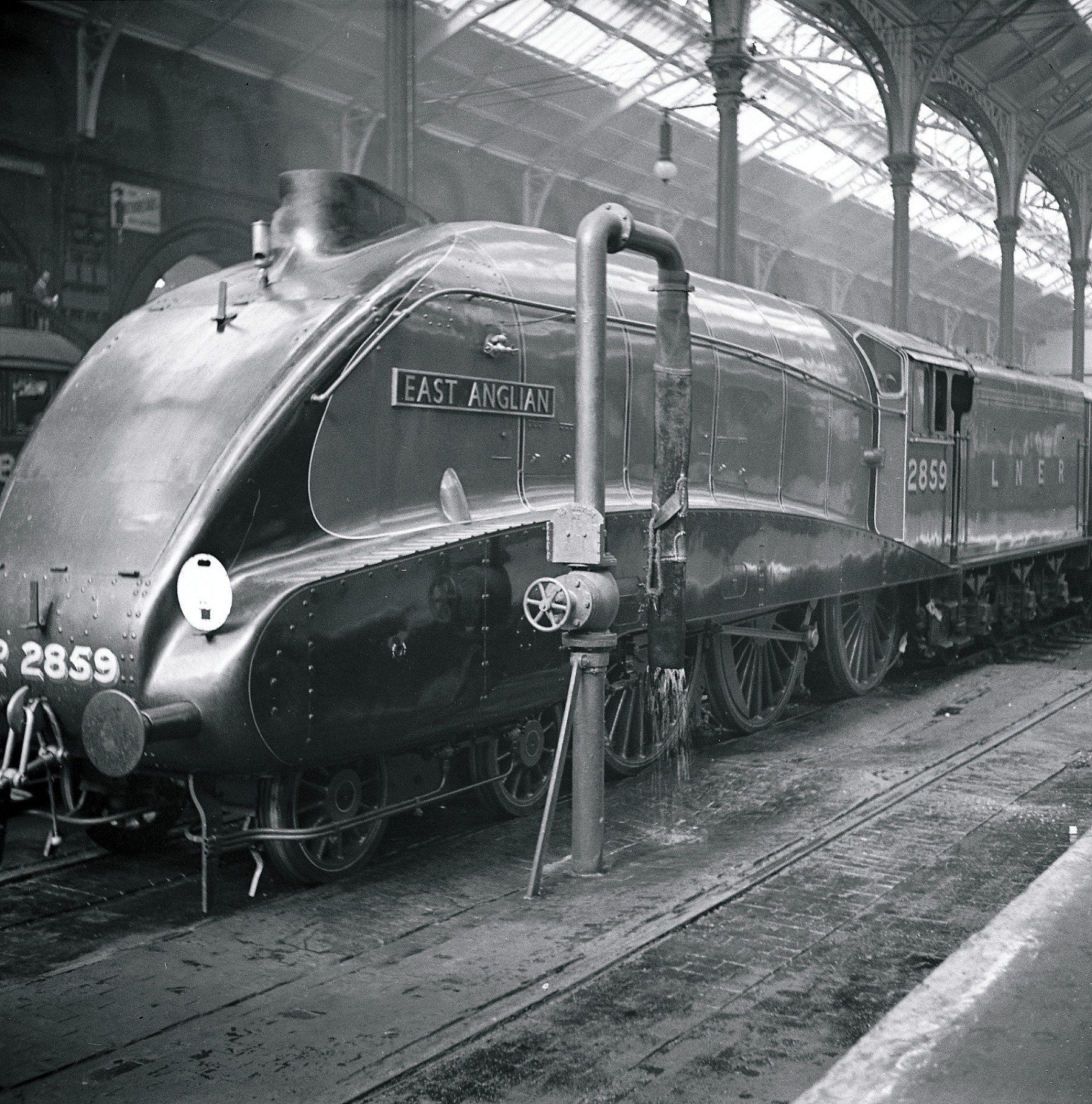Your cart is currently empty!

The East Anglian
‘The East Anglian’ was a streamlined express passenger train introduced by the LNER in 1937 and ran between Liverpool Street and Norwich.

‘The East Anglian’ service of the LNER was introduced on 27th September 1937, soon after ‘The Coronation’ and ‘The West Riding Limited’, but differed from those – and from ‘The Silver Jubilee’ of 1935 – in several respects. It did not use new Gresley class A4 4-6-2 locomotives but instead existing Class B17 4-6-0s were given a streamlined casing; although new carriages were built, these were neither articulated nor streamlined; there was no special livery; it ran at speeds not much greater than those achieved by existing expresses on the Norwich line; and there was no supplementary fare.
The two locomotives were converted during September 1937 from existing Class B17/4 locomotives with Group Standard 4,200 gallon tenders. The footplate was removed, a streamlined casing similar to that of Class A4 was fitted over the existing outer boiler covering, the cab sides were replaced, and the tender sides increased in height.


No. 2859 Norwich City was renamed as East Anglian and No. 2870 Tottenham Hotspur as City of London and they were reclassified class B17/5. Their livery was LNER green, lined out in black and white; the side valances were black, and on the smokebox sides, the green met the black in a parabolic arc similar to that of class A4.
The two locomotives were allocated to Norwich (Thorpe) but were not confined to ‘The East Anglian’ service. Typically, one would work ‘The East Anglian’ from Norwich to Liverpool Street, and return on less important services; the other would work lower-importance services from Norwich to London, and return with ‘The East Anglian’. When one locomotive was stopped for maintenance, the other would work ‘The East Anglian’ in both directions; and on the rare occasions that neither was available, another class B17 would be used.


One set of six carriages was approved in November 1936 for the 1937 Carriage Building Programme, and built at York in 1937.
Open Brake Third
Restaurant Kitchen First
Open First
Open Third
Restaurant Kitchen Third
Open Brake Third
The first-class end was at the front as the train left Liverpool Street. Unlike ‘The Coronation’, there was no “beaver tail” Observation Car.
Unlike the special carriages built for the other streamlined services, ‘The East Anglian’ carriages were not articulated, and were not streamlined either – they were of normal external appearance, with varnished teak finish, although they did conform to the latest LNER practice in that the external doors were in the vestibules. The body dimensions – 61 feet 6 inches – were the same as standard LNER carriages, and thus somewhat longer than general-service LNER carriages built for the GE section, which were typically 52 feet 6 inches until 1938.


The internal styling was very similar to that of ‘The Coronation’ and ‘The West Riding Limited’, except that the first-class seating was arranged 2+1 instead of 1+1. There were no compartments, each carriage being divided into two or three open saloons; in both classes, seating was arranged 2+1 in bays of six, and all 198 seats were available for dining.
The train was inaugurated in Autumn 1937. It ran on Mondays to Fridays only, between Liverpool Street and Norwich, calling only at Ipswich. It was originally allowed 135 minutes for the 115 miles (an overall average of just over 51 mph); this was later reduced to 130 minutes (53 mph). There were two factors which limited the peak speeds: the general speed restriction on the Norwich line of 80 mph, and the need to fit in with other services using the same tracks, particularly on the congested stretches west of Colchester – the quadruple track finished at Shenfield.


Of the high-speed services operated by the LNER, ‘The East Anglian’ was the least profitable. ‘The East Anglian’ service was withdrawn at the outbreak of war and the carriages were returned to the general service fleet, being used for other express trains on the Great Eastern section. The service resumed again on 7th October 1946, using the six 1937 carriages (overhauled) plus a further two all-third coaches to make an eight-carriage train, but was now hauled by Thompson class B1 4-6-0s.
‘The East Anglian’ service continued after the reorganisation of East Anglian services in 1951, but with only a single restaurant car. The Gresley coaches were subsequently replaced by BR Mark 1s. No vehicles survive in preservation.

